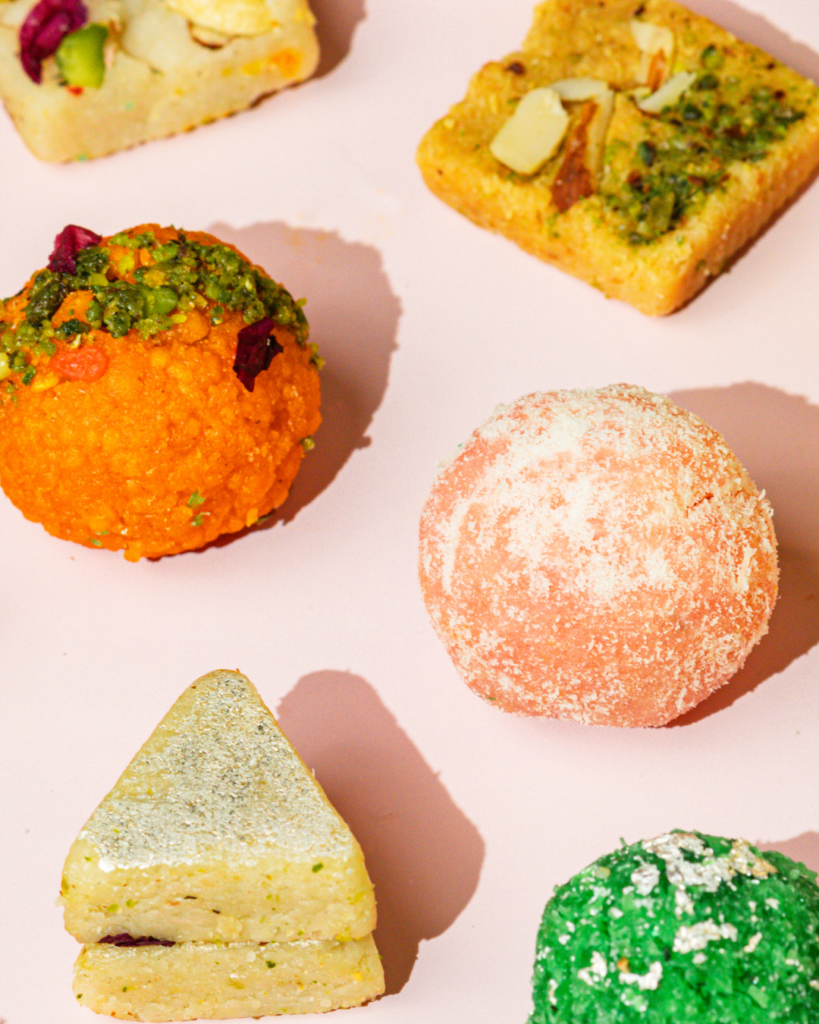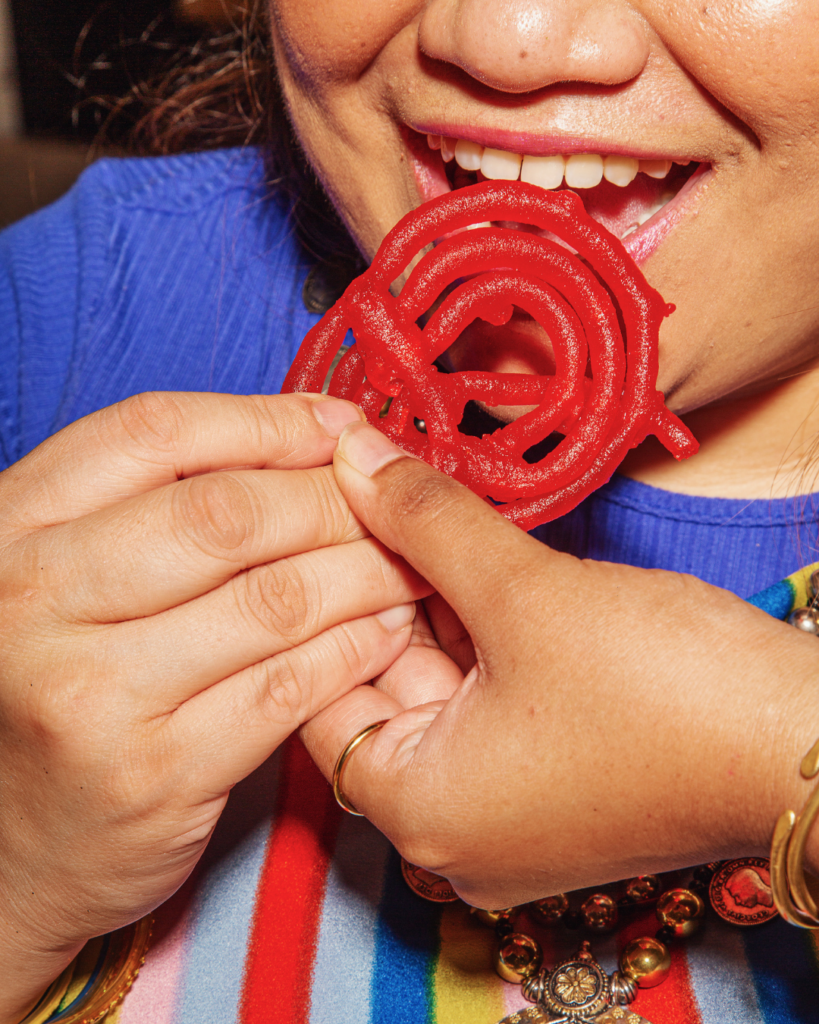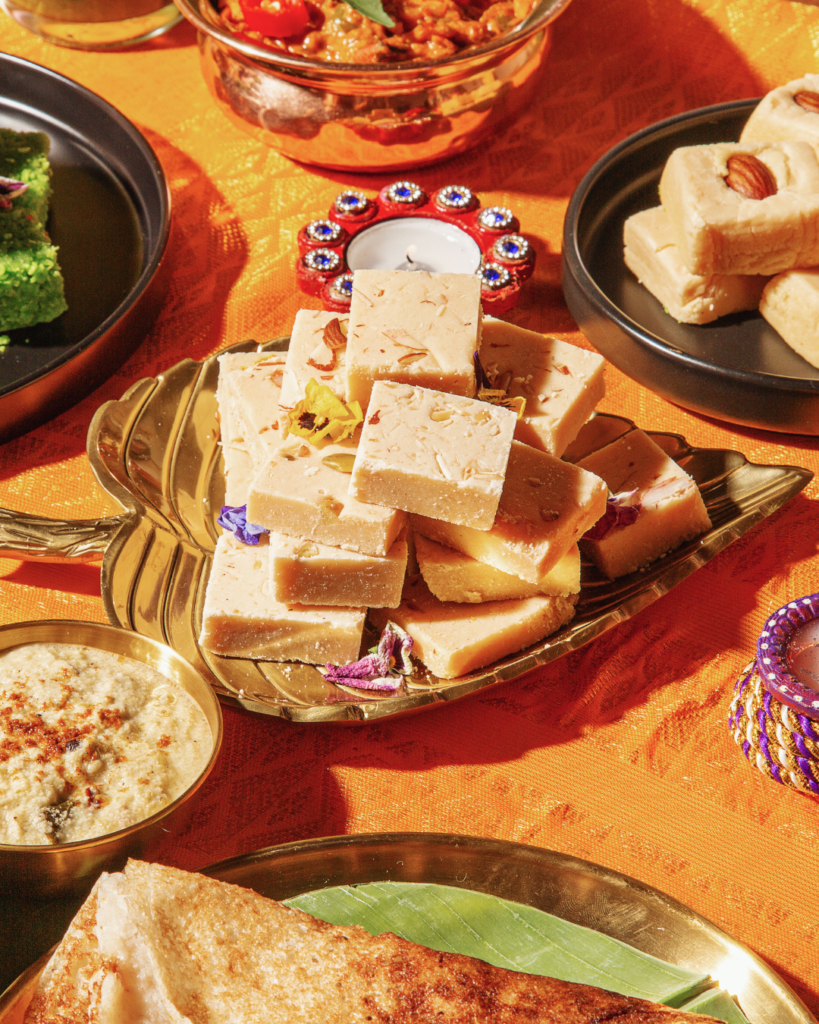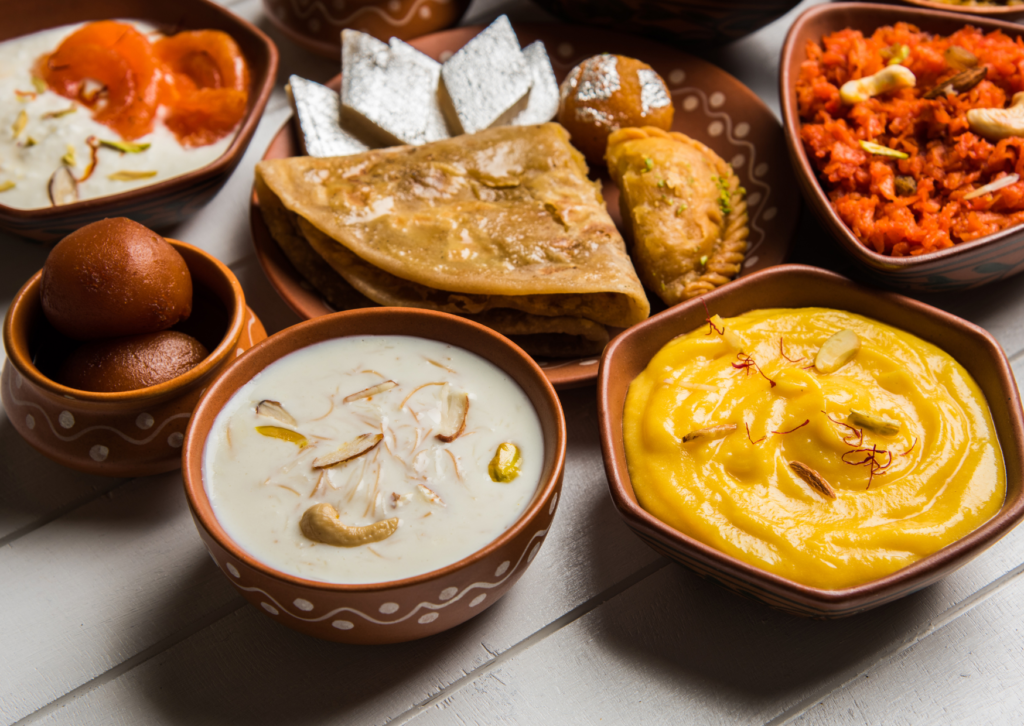THE LANGUAGE OF MITHAI




Mithai, Meeta, Mishti all translating to sweets but not your average hard boiled goodies. Instead it is a diverse range of speciality confectionery derived from South Asia and mainly made from sugar, milk and a range of nuts. Each country and region having their own version of these delectable treats but holds so much tradition and cultural significance even today.
Once you read this blog you may reconsider what to take gift on a special occasion or milestone…
MORE THAN JUST A TREAT
Celebration has a taste in the South asian regions and it isn’t just salty, spicy, or bitter—it’s unapologetically, gloriously sweet. It’s the taste of mithai.
More than just a dessert, mithai (or mishti, as it’s lovingly called by bengali people) is woven into the very fabric of life. It’s a language of joy, a symbol of prosperity, and a delicious heirloom passed down through generations. Every bite tells a story of empire, artistry, and love.
Let’s take a journey through the decadent, syrupy, and incredible heritage of Indian sweets.


A HISTORY STEEPED IN SUGAR AND SPICE
The story of mithai begins centuries ago. While India had indigenous sweets like laddus offered to deities in ancient times, the mithai we know and love today was shaped by a beautiful fusion of cultures.
The Ancient Roots: The Vedas mention offerings of “Madhuparka,” a mixture of honey, yogurt, and ghee. This sacred beginning established sweets as pure, divine, and celebratory.
The Persian Influence: The real revolution came with the Mughals. They brought with them the art of slow-cooking milk, leading to the invention of kheer (rice pudding) and the reduction of milk into khoya (mawa). This was the cornerstone for classics like barfi and gulab jamun.
The Bengali Renaissance: In the East, under the patronage of nawabs and zamindars, Bengali confectioners, or ‘moiras’, elevated sweet-making to an art form. They experimented with chhena (fresh cheese), creating masterpieces like the delicate rasgulla, the majestic rasmalai, and the intricate sandesh.
TRADITIONS & CULTURAL SIGNIFICANCE
A box of mithai is never just a box of mithai. It’s a messenger.
A Symbol of Auspiciousness: No puja (prayer) is complete without prasad, often a sweet like laddu or peda. It represents the divine’s blessing.
An Emissary of Joy: Got a new job? Had a baby? Passed an exam? Mithai is distributed to share the happiness and sweeten the lives of others.
A Gesture of Hospitality: Offering a sweet to a guest is the first and most important rule of impeccable hospitality and etiquette.
The Heart of Festivals: Every festival has its signature sweet. Diwali is synonymous with crunchy kaju katli and syrupy jalebis. Eid is incomplete without creamy seviyan. Raksha Bandhan calls for sisterly love and a plate of ghevar or shrikhand as well as weddings with Gajjar halwa and ice cream (insert drool face here).

PUTTING THE SWEETNESS ON THE MAP
Travel across South Asia, and the landscape of sweets changes dramatically, each region boasting its own iconic creation:
The North: Home to the milk-rich paneer jalebi, peda (Mathura & Vrindavan), and the saffron-infused phirni.
The East (Bangladesh): The kingdom of chhena. Here, you’ll find the spongy rasgulla, the flower-shaped cham cham, and the baked milky dough ball goodness which is rasmalai.
The South: Known for its use of coconut, jaggery, and lentils. Think of the wholesome Mysore Pak, the crispy badusha, and the rice-based payasam.
The West: Maharashtra’s puran poli (a sweet stuffed flatbread) and Gujarat’s sutar feni (a delicate, thread-like sweet) showcase incredible diversity.
The Unforgettable: And who can forget the giant, swirling jalebi dipped in syrup, the warm, fluffy balushahi, or the simple, comforting soan papdi that melts in your mouth?
Photo: Our very own kala Jaam a favourite from Bangladesh and try it at babujis today.
